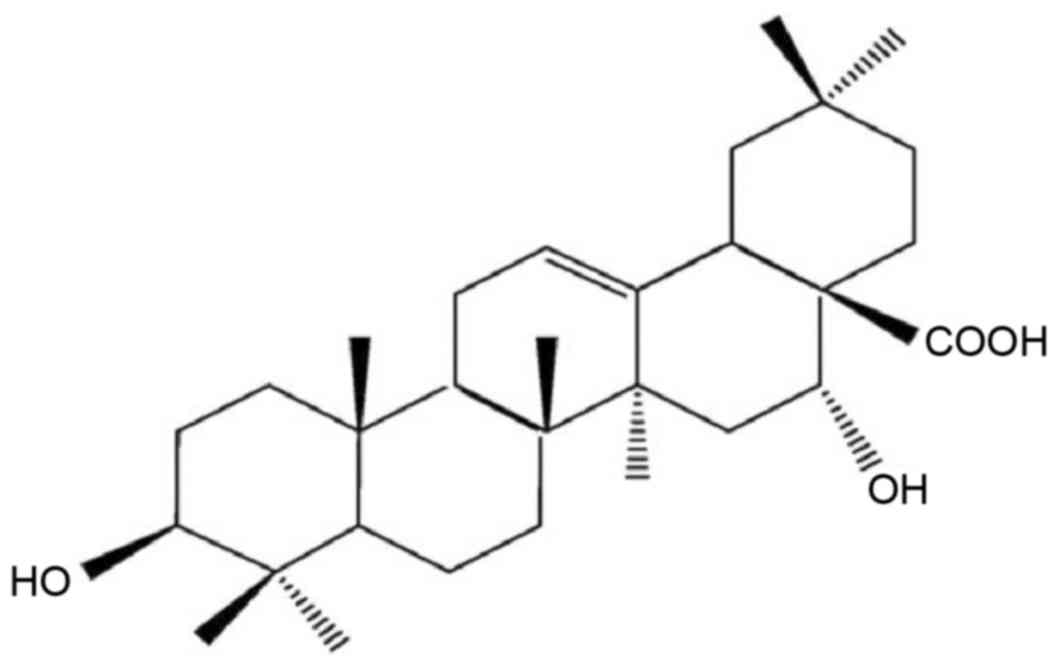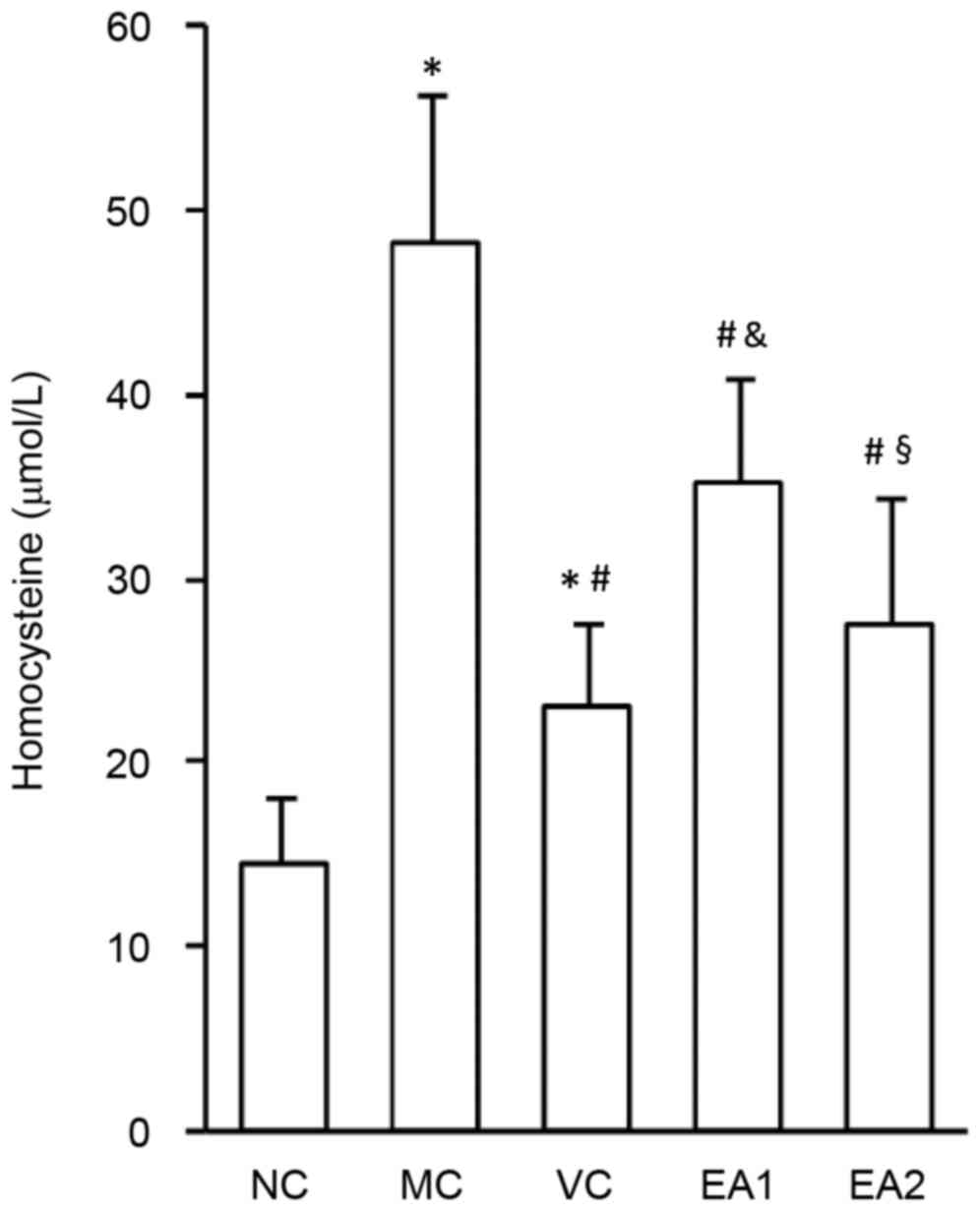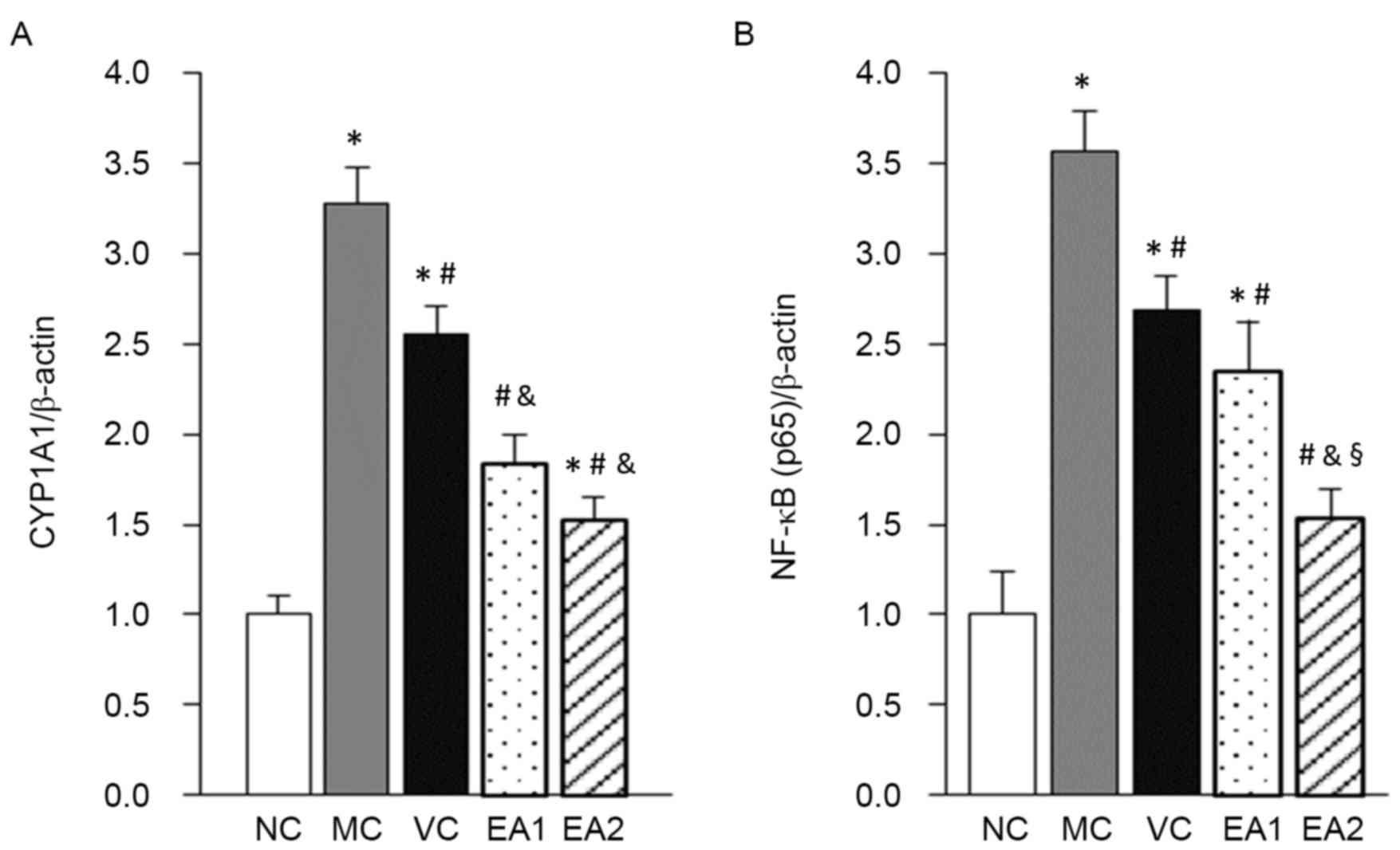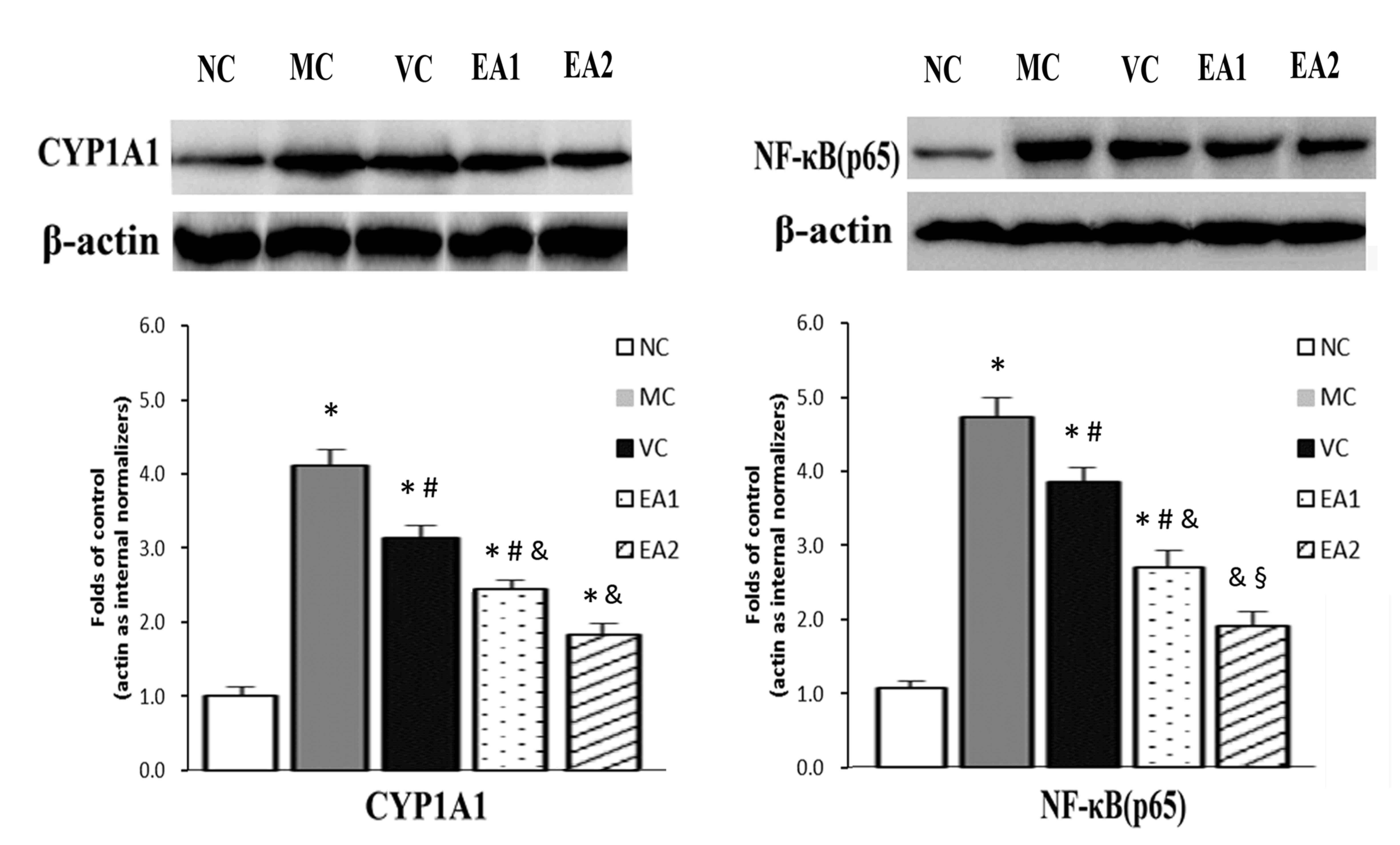|
1
|
Fowler B: Homocystein-an independent risk
factor for cardiovascular and thrombotic diseases. Ther Umsch.
62:641–646. 2005. View Article : Google Scholar : PubMed/NCBI
|
|
2
|
Lentz SR: Mechanisms of
homocysteine-indued atherothrombosis. Thromb Haemost. 3:1646–1654.
2005. View Article : Google Scholar
|
|
3
|
De Bree A, Verschuren WM, Kromhout D,
Kluijtmans LA and Blom HJ: Homocysteine determinants and the
evidence to what extent homocysteine determines the risk of
coronary heart disease. Pharmacol Rev. 54:599–618. 2002. View Article : Google Scholar : PubMed/NCBI
|
|
4
|
Hidiroglou N, Gilani GS, Long L, Zhao X,
Madere R, Cockell K, Belonge B, Ratnayake WM and Peace R: The
influence of dietary vitamin E, fat, and methionine on blood
cholesterol profile, homocysteine levels, and oxidizability of low
density lipoprotein in the gerbil. J Nutr Biochem. 15:730–740.
2004. View Article : Google Scholar : PubMed/NCBI
|
|
5
|
Lin CP, Chen YH, Chen JW, Leu HB, Liu TZ,
Liu PL and Huang SL: Cholestin (Monascus purpureus rice) inhibits
homocysteine-induced reactive oxygen species generation, nuclear
factor-kappaB activation, and vascular cell adhesion molecule-1
expression in human aortic endothelial cells. J Biomed Sci.
15:183–196. 2008. View Article : Google Scholar : PubMed/NCBI
|
|
6
|
Remacha AF, Souto JC, Piñana JL, Sardà MP,
Queraltó JM, Martí-Fabregas J, García-Moll X, Férnandez C,
Rodriguez A and Cuesta J: Vitamin B12 deficiency,
hyperhomocysteinemia and thrombosis: A case and control study. Int
J Hematol. 93:458–464. 2011. View Article : Google Scholar : PubMed/NCBI
|
|
7
|
Deng YT, Kang WB, Zhao JN, Liu G and Zhao
MG: Osteoprotective effect of echinocystic acid, a triterpone
component from eclipta prostrata, in ovariectomy-induced
osteoporotic rats. PLoS One. 10:e01365722015. View Article : Google Scholar : PubMed/NCBI
|
|
8
|
Xu LP, Wang H and Yuan Z: Triterpenoid
saponins with anti-inflammatory activity from Codonopsis
lanceolata. Planta Med. 74:1412–1425. 2008. View Article : Google Scholar : PubMed/NCBI
|
|
9
|
Joh EH, Gu W and Kim DH: Echinocystic acid
ameliorates lung inflammation in mice and alveolar macrophages by
inhibiting the binding of LPS to TLR4 in NF-κB and MAPK pathways.
Biochem Pharmacol. 84:331–340. 2012. View Article : Google Scholar : PubMed/NCBI
|
|
10
|
Joh EH, Gu W and Kim DH: Echinocystic acid
ameliorates lung inflammation in mice and alveolar macrophages by
inhibiting the binding of LPS to TLR4 in NF-kB and MAPK pathways.
Biochem Pharmacol. 84:331–340. 2012. View Article : Google Scholar : PubMed/NCBI
|
|
11
|
Joh EH, Jeong JJ and Kim DH: Inhibitory
effect of echinocystic acid on
12-O-tetradecanoylphorbol-13-acetate-induced dermatitis in mice.
Arch Pharm Res. 37:225–231. 2014. View Article : Google Scholar : PubMed/NCBI
|
|
12
|
Ryu S, Shin JS, Jung JY, Cho YW, Kim SJ,
Jang DS and Lee KT: Echinocystic acid isolated from Eclipta
prostrata suppresses lipopolysaccharide-induced iNOS, TNF-α and
IL-6 expressions via NF-κB inactivation in RAW 264.7 macrophages.
Planta Med. 79:1031–1037. 2013. View Article : Google Scholar : PubMed/NCBI
|
|
13
|
Wu J, Li J, Zhu Z, Li J, Huang G, Tang Y
and Gao X: Protective effects of echinocystic acid isolated from
Gleditsia sinensis Lam. against acute myocardial ischemia.
Fitoterapia. 81:8–10. 2010. View Article : Google Scholar : PubMed/NCBI
|
|
14
|
Zou JG, Ma YT, Xie X, Yang YN, Pan S, Adi
D, Liu F and Chen BD: Erratum to: The association between CYP1A1
genetic polymorphisms and coronary artery disease in the Uygur and
Han of China. Lipids Health Dis. 14:1182015. View Article : Google Scholar : PubMed/NCBI
|
|
15
|
Wang XL, Greco M, Sim AS, Duarte N, Wang J
and Wilcken DE: Effect of CYP1A1 MspI polymorphism on cigarette
smoking related coronary artery disease and diabetes.
Atherosclerosis. 162:391–397. 2002. View Article : Google Scholar : PubMed/NCBI
|
|
16
|
Jarvis MD, Palmer BR, Pilbrow AP, Ellis
KL, Frampton CM, Skelton L, Doughty RN, Whalley GA, Ellis CJ,
Yandle TG, et al: CYP1A1 MSPI (T6235C) gene polymorphism is
associated with mortality in acute coronary syndrome patients. Clin
Exp Pharmacol Physiol. 37:193–198. 2010. View Article : Google Scholar : PubMed/NCBI
|
|
17
|
Achour B, Barber J and Rostami-Hodjegan A:
Expression of hepatic drug-metabolizing cytochrome P450 enzymes and
their intercorrelations: A meta-analysis. Drug Metab Dispos.
42:1349–1356. 2014. View Article : Google Scholar : PubMed/NCBI
|
|
18
|
Morel Y and Barouki R: Down-regulation of
cytochrome P450 1A1 gene promoter by oxidative stress. Critical
contribution of nuclear factor 1. J Biol Chem. 273:26969–26976.
1998. View Article : Google Scholar : PubMed/NCBI
|
|
19
|
Chu ZM, Croft KD, Kingsbury DA, Falck JR,
Reddy KM and Beilin LJ: Cytochrome P450 metabolites of arachidonic
acid may be important mediators in angiotensin II-induced
vasoconstriction in the rat mesentery in vivo. Clin Sci (Lond).
98:277–282. 2000. View Article : Google Scholar : PubMed/NCBI
|
|
20
|
Zhou B, He S, Wang XI, Zhen X, Su X and
Tan W: Metabolism of arachidonic acid by the cytochrome P450 enzyme
in patients with chronic Keshan disease and dilated cardiomyopathy.
Biomed Rep. 4:251–255. 2016. View Article : Google Scholar : PubMed/NCBI
|
|
21
|
Uno S, Sakurai K, Nebert DW and Makishima
M: Protective role of cytochrome P450 1A1 (CYP1A1) against
benzo[a]pyrene-induced toxicity in mouse aorta. Toxicology.
316:34–42. 2014. View Article : Google Scholar : PubMed/NCBI
|
|
22
|
Zhang R, Ma J, Xia M, Zhu H and Ling W:
Mild hyperhomocysteinemia induced by feeding rats diets rich in
methionine or deficient in folate promotes early atherosclerotic
inflammatory processes. J Nutr. 134:825–830. 2014.
|
|
23
|
Song S, Kertowidjojo E, Ojaimi C,
Martin-Fernandez B, Kandhi S, Wolin M and Hintze TH: Long-term
methionine-diet induced mild hyperhomocysteinemia associated
cardiac metabolic dysfunction in multiparous rats. Physiol Rep.
3:pii: e12292. 2015. View Article : Google Scholar : PubMed/NCBI
|
|
24
|
da Cunha AA, Ferreira AG, da Cunha MJ,
Pederzolli CD, Becker DL, Coelho JG, Dutra-Filho CS and Wyse AT:
Chronic hyperhomocysteinemia induces oxidative damage in the rat
lung. Mol Cell Biochem. 358:153–160. 2011. View Article : Google Scholar : PubMed/NCBI
|
|
25
|
Pfeiffer CM, Huff DL and Gunter EM: Rapid
and accurate HPLC assay for plasma total homocysteine and cysteine
in a clinical laboratory setting. Clin Chem. 45:290–292.
1999.PubMed/NCBI
|
|
26
|
Livak KJ and Schmittgen TD: Analysis of
relative gene expression data using real-time quantitative PCR and
the2(-Delta Delta C(T)) method. Methods. 25:402–408. 2001.
View Article : Google Scholar : PubMed/NCBI
|
|
27
|
Tamadon MR, Jamshidi L, Soliemani A,
Ghorbani R, Malek F and Malek M: Effect of different doses of folic
acid on serum homocysteine level in patients on hemodialysis. Iran
J Kidney Dis. 5:93–96. 2011.PubMed/NCBI
|
|
28
|
Yang RX, Huang SY, Yan FF, Lu XT, Xing YF,
Liu Y, Liu YF and Zhao YX: Danshensu protects vascular endothelia
in a rat model of hyperhomocysteinemia. Acta Pharmacol Sin.
31:1395–1400. 2010. View Article : Google Scholar : PubMed/NCBI
|
|
29
|
Ross R: Atherosclerosis-an inflammatory
diseas. N Engl J Med. 340:115–126. 1999. View Article : Google Scholar : PubMed/NCBI
|
|
30
|
Berliner JA, Navab M, Fogelman AM, Frank
JS, Demer LL, Edwards PA, Watson AD and Lusis AJ: Atherosclerosis:
Basic mechanisms. Oxidation, inflammation, and genetics.
Circulation. 91:2488–2496. 1995. View Article : Google Scholar : PubMed/NCBI
|
|
31
|
Hossain GS, van Thienen JV, Werstuck GH,
Zhou J, Sood SK, Dickhout JG, de Koning AB, Tang D, Wu D, Falk E,
et al: TDAG51 is induced by homocysteine, promotes
detachment-mediated programmed cell death, and contributes to the
cevelopment of atherosclerosis in hyperhomocysteinemia. J Biol
Chem. 278:30317–30327. 2003. View Article : Google Scholar : PubMed/NCBI
|
|
32
|
Baird WM, Hooven LA and Mahadevan B:
Carcinogenic polycyclic aromatic hydrocarbon-DNA adducts and
mechanism of action. Environ Mol Mutagen. 45:106–114. 2005.
View Article : Google Scholar : PubMed/NCBI
|
|
33
|
Hockley SL, Arlt VM, Brewer D, Te Poele R,
Workman P, Giddings I and Phillips DH: AHR- and DNA-damage-mediated
gene expression responses induced by benzo(a)pyrene in human cell
lines. Chem Res Toxicol. 20:1797–1810. 2007. View Article : Google Scholar : PubMed/NCBI
|
|
34
|
Au-Yeung KK, Woo CW, Sung FL, Yip JC and
Siow YLOK: Hyperhomocysteinemia activities nuclear factor-kappaB in
endothelial cells via oxidative stresss. Circ Res. 94:28–36. 2004.
View Article : Google Scholar : PubMed/NCBI
|
|
35
|
Gao M, Li Y, Xue X, Long J, Chen L, Shah W
and Kong Y: Impact of AhR, CYP1A1 and GSTM1 Genetic Polymorphisms
on TP53 R273G Mutations in Individuals Exposed to Polycyclic
Aromatic Hydrocarbons. Asian Pac J Cancer Prev. 15:2699–2705. 2014.
View Article : Google Scholar : PubMed/NCBI
|
|
36
|
Demirdöğen BC, Adali AÇ, Bek S, Demirkaya
Ş and Adali O: Cytochrome P4501A1 genotypes and smoking- and
hypertension-related ischemic stoke risk. Hum Exp Toxicol.
32:483–491. 2013. View Article : Google Scholar : PubMed/NCBI
|
|
37
|
Zordoky BN and El-Kadi AO: Role of
NF-kappaB in the regulation of cytochrome P450 enzymes. Curr Drug
Metab. 10:164–178. 2009. View Article : Google Scholar : PubMed/NCBI
|
|
38
|
van Mil NH, Oosterbaan AM and
Steegers-Theunissen RP: Teratogenicity and underlying mechanisms of
homocysteine in animal models: A review. Reprod Toxicol.
30:520–531. 2010. View Article : Google Scholar : PubMed/NCBI
|














